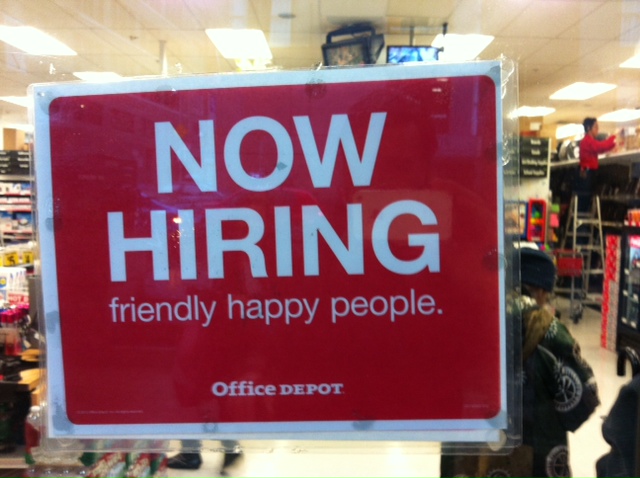A 16 hour outage by hosting service Bluehost knocks the wind out of this site’s sails.
There’s much to say about customer engagement, engineering and management but it will have to wait for another day.

A 16 hour outage by hosting service Bluehost knocks the wind out of this site’s sails.
There’s much to say about customer engagement, engineering and management but it will have to wait for another day.

Around the world manufacturers are wondering how they adapt to the rise of 3D printing nod the continued challenge of China’s low costs of production.
In Singapore, Reuters reports, the government is putting its hopes on new technology boosting the country’s manufacturing industry in one of the world’s highest cost centers.
“The future of manufacturing for us is about disruptive technologies, areas like 3D printing, automation and robotics,” EDB Managing Director Yeoh Keat Chuan told Reuters.
Britain too is experimenting with modern technologies as the BBC’s World of Business reports about how the country is reinventing its manufacturing industry.
Tim Chapman of the University of Sheffield’s Advanced Manufacturing Research Centre describes how the economics of manufacturing changes in a high cost economy with an simple advance in machining rotor disks for Rolls-Royce Trent jet engines.
“These quite complex shaped grooves were taking 54 minutes of machining to make each of these slots. Rolls-Royce came to us and said can ‘can you improve the efficiency of this? Can you cut these slots faster.”
“We reduced the cutting time from 54 minutes to 90 seconds.”
“That’s the kind of process improvement that companies need to achieve to manufacture in the UK.”
Interestingly many of those British engineers interviewed by Peter Day in the BBC report focus on China’s cheap labor as being the driver for moving up the value chain and automating
Dismissing China as purely a low cost producer a risk as Chinese manufacturers are working hard to move up the value chain as their aging populating erodes their labor advantage.
The last word though for Britain’s engineering sector has to go to Hugh Facey, founder of wire tool company, Gripple.
Both Singapore and the UK are working on establishing their positions in the 21st Century economy; both business owners and individuals have to give some thought on where they want to be.
For manufacturing, the rollout of new technologies means the industry is going to look very different in the next decade. It won’t be the only industry radically changed.

Last year car rental giant AvisBudget acquired the vehicle sharing service Zipcar, at the time it looked like the established player was buying in the tech smarts of younger startup.
Citing ‘synergies’ at the time of a takeover is always a warning sign that a corporate acquisition may not go well and so it has proved with Avis’ efforts with Zipcar as travel news site Skift reports;
Speaking at the J.P. Morgan Gaming, Lodging, Restaurant & Leisure Management Access Forum in Las Vegas earlier this week, AvisBudget CEO Ron Nelson said fleet-sharing has turned out to be more complicated than the company thought because there’s a cost tied to moving the vehicles from one location to another.
That’s a strange statement as a casual observer would be forgiven for thinking that if any organisation understood the costs of moving vehicles around it would be a car hire company.
Apparently that’s not the case and the ‘synergies’ from acquisition will be pushed back to 2015.
Synergies are elusive things and it may well prove that Ron Nelson would be better served by examining how Zipcar’s technology, algorithms and flat management structures can be applied to a more staid organisation like Avis.
The real value in companies like Zipcar and Uber is the way they are applying technology to moving physical goods around – it’s no surprise that Uber’s Travis Kalanick describes his ambition for the future of his company as being the Amazon for logistics.
For Avis, Zipcar’s opportunities lie in more that just enhancing the company’s fleet utilization; understanding the marketplace and predicting demand is where the real gains could be made.

Last October, ahead of the company’s Orlando Symposium, Gartner Research Director Kenneth Brant released a paper looking at the effects of technology on the workplace.
“Most business and thought leaders underestimate the potential of smart machines to take over millions of middle-class jobs in the coming decades,” Brant wrote. “Job destruction will happen at a faster pace, with machine-driven job elimination overwhelming the market’s ability to create valuable new ones.”
Brant’s view about middle class jobs is a sobering thought, many of the corporate ‘knowledge worker’ positions can be easily replaced by computers to make the decisions now being made by armies of mid level managers, bean counters and clerks.
Indeed the whole concept of ‘knowledge worker’ that was fashionable in the 1980s and early 90s in describing the post-industrial workforce of nations like the US, Britain and Australia is undermined by the rise of powerful computers and well crafted algorithms to do the jobs unemployed steel workers and seamstresses were going to do.
Twenty years later and the ‘knowledge workers’ had morphed into the ‘creative class’ and it appears the computers are coming for them, too.
Personally, I subscribe to the view in the medium to long term new jobs in new industries will evolve – a view shared by economists like GE’s chief economist, Marco Annunziata.
Over the next decade however there’s no doubt we’ll be seeing great disruption to established industries and the hostility to Google buses in San Francisco may be just an early taste of a greater antagonism to the technology community in general.
For managers, the problems are more complex; while their own departments, corporate power bases and even their own jobs are at risk, they are going to have to find ways to incorporate these changes into their own business. Gartner warns CIOs in its briefing paper;
The impact will be such that firms that have not begun to develop programs and policies for a “digital workforce” by 2015 will not perform in the top quartile for productivity and operating profit margin improvement in their industry by 2020. As a direct result, the careers of CIOs who do not begin to champion digital workforce initiatives with their peers in the C-suite by 2015 will be cut short by 2023.
Few industries are going to be untouched by the disruptions of the next decade and the resultant job losses are going to present challenges for all of us.